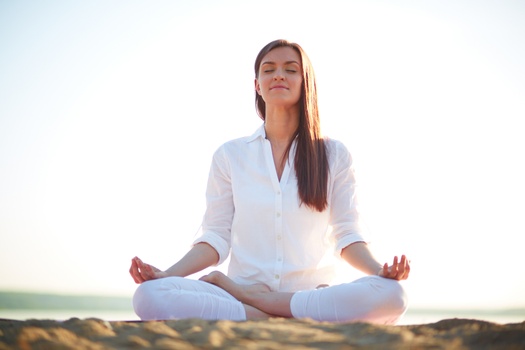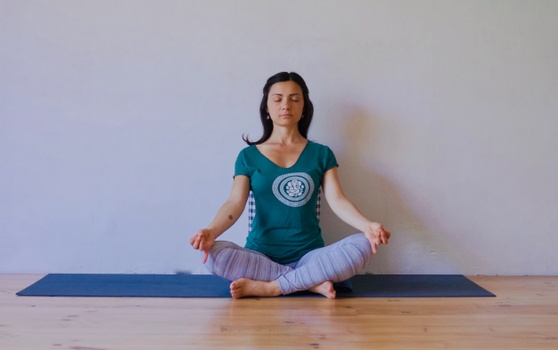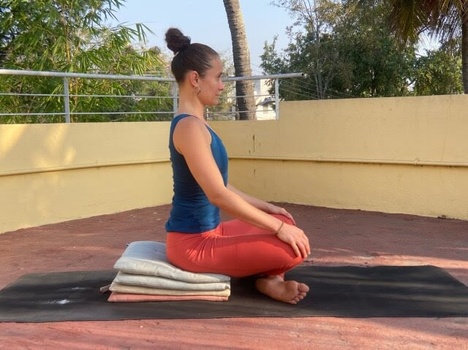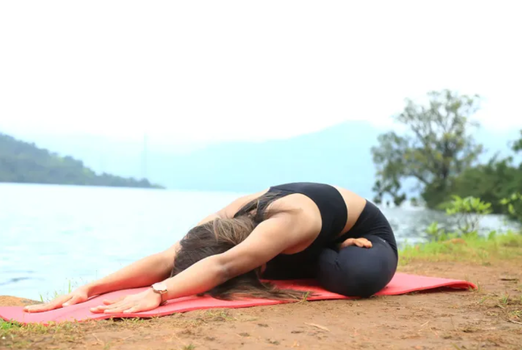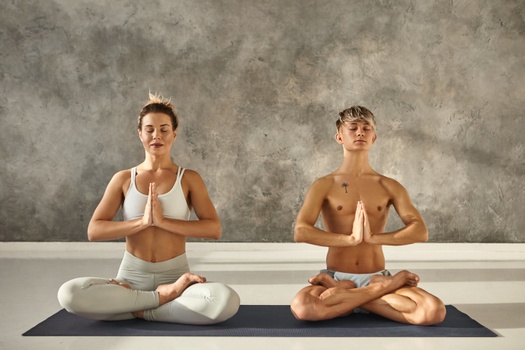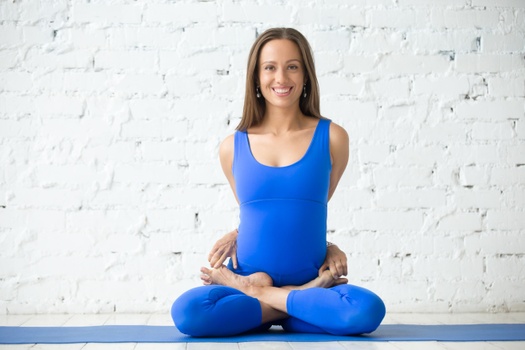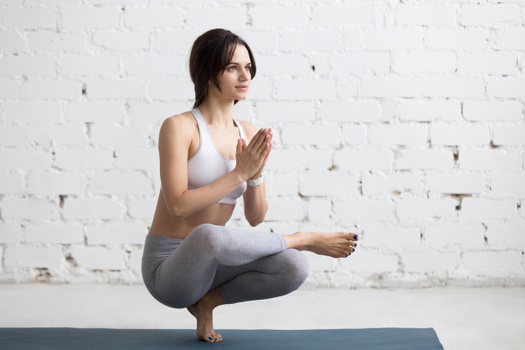Below the practice is divided into four parts: preparation, posture step, alignment cues, and relax flow.
Later you will come across a few posture modifications and variations for beginners and intermediates to modify their practice if needed.
Part 1: Preparation for Swastikasana
To prepare for the Auspicious Pose, you must warm up your legs, core, and glutes. Here are a few poses that can help:
1. Dandasana (Staff Pose) - Sit in the center of your mat and begin with your legs extending in front of you, with your toes pointing toward the ceiling. Keep your spine upright, your hands placed to the side of your hip flexors, and your gaze focused in front of you.

Hold this pose for 60 to 90 seconds while engaging your core muscles. This posture will activate your hamstrings, glutes, ankles, and core muscles.
2. Baddha Konasana (Cobbler's Pose) - This is the best yoga posture to reach the deepest parts of your glute muscles. Start by taking a seat in the middle of the yoga mat with your back straight. Now, bend your legs from the knee and make a prayer formation with your legs.
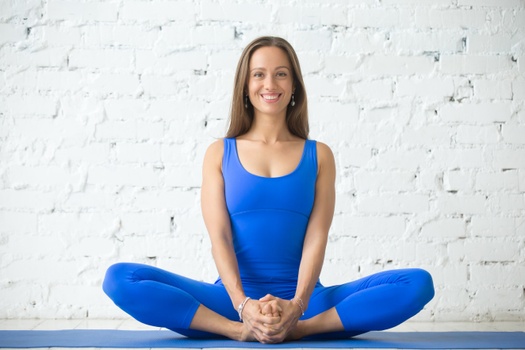
Hold your feet together with your hands, keeping your knees close to the mat, and maintain this pose for 60 to 90 seconds. For a deep hip and thigh opening, you can lean forward or try to do butterfly flaps with your legs.
3. Sukhasana (Easy Seated Pose) - Sit in the center of your yoga mat with your sitting bones at ease. If your sitting bones hurt, add some folded blankets under your glutes to make them more comfortable.
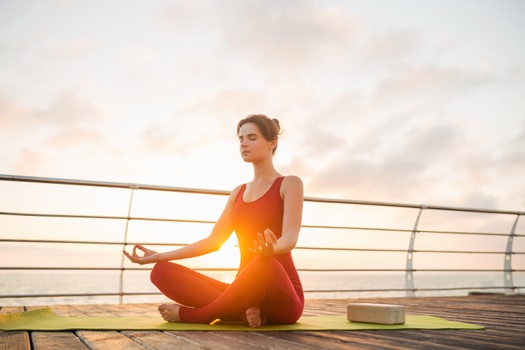
Now, interlace your legs so that your right foot is placed below your left knee and vice-versa. Hold this pose here for 3 to 5 minutes with a straight spine. This pose is closely related to the positioning of the Auspicious Pose.
Part 2: Step-by-Step Instructions to Perform Swastikasana
The following are steps to practice Swastikasana or Auspicious Pose:
Step 1: Take a seated, upright position on the floor and spread both legs in front of you.
Step 2: Start by simply bending your left leg from the knees and placing your left foot's sole on the inside of your right thigh.
Step 3: Next, bend your right leg from the knee and place your right shin in the space between your left and thigh muscles.
Step 4: Make sure your knees are touching the yoga mat. Engage your core and straighten your spine. Keep your hands in Gayan Mudra against your knees and close your eyes.
Step 5: Relax your whole body by breathing consciously. You can also practice Pranayama or Meditation in this position for a mindful session.
Breath Awareness:
Keep your breathing regular and at a steady pace. Make sure to breathe deeply and exhale twice as much as you breathe in.
Performance Duration for Beginners: Hold Auspicious Pose for 5-10 minutes.
Performance Duration for Advanced: Hold Auspicious Pose for as long as it feels comfortable.
Part 3: Things to Keep in Mind
Being conscious of your sitting posture is important, especially when you are performing this asana for a long duration. Below are some Auspicious Pose alignment cues to keep you safe from injury:
Avoid rounding of the spine: Only a straight and upright back during Swastikasana will help you reap the most health benefits of the pose. If your back hurts and you’re unable to keep it upright, try sitting beside a wall and to build some strength in your spine.
Part 4: Relaxing Poses After Swastikasana
After a long sitting session in Swastikasana, it’s helpful to regain blood circulation back around your legs and hip muscles. Here are a few counter yoga poses for relaxation after your long Auspicious Pose practice:
1. Baddha Konasana Uttanasana (Bound Angle Forward Bend): After the Swastikasana practice, change your leg placement into Namaste formation. Hold your feet with your hands and gently bend your upper body forward on the ground.

Bend forward only as much as you feel it’s comfortable for your back and glutes to tolerate. This pose will help your spine to relax, and your glutes activate blood circulation after a long Swastikasana practice.
2. Supta Baddha Konasana (Reclining Bound Angle Pose): This posture will bring the spine into a natural shape, stimulate your heart, and relax the pelvis. From the Bound Angle Forward Bend, sit back up in Baddha Konasana for a few deep breaths. Maintain the prayer formation in your legs, exhale deeply and gently bend your torso back toward the ground.
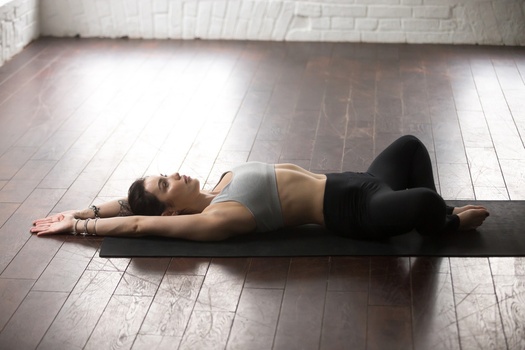
First, place your hand on the ground, then your tailbone, then your mid-back, and finally your neck. Take a few deep breaths, close your eyes, and unwind your entire body. Push your knees outwards and try to keep them close to the ground.
